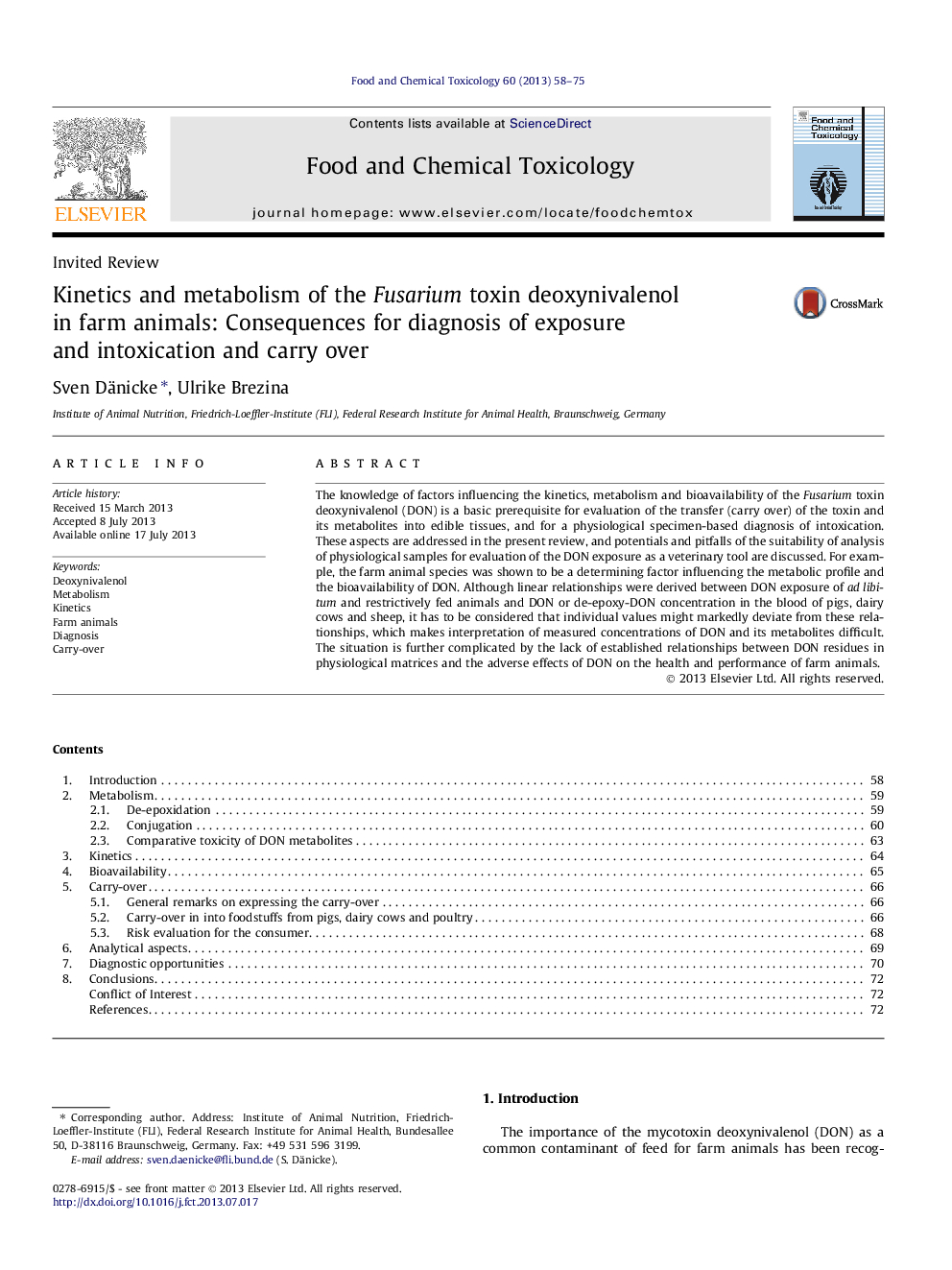| Article ID | Journal | Published Year | Pages | File Type |
|---|---|---|---|---|
| 2585082 | Food and Chemical Toxicology | 2013 | 18 Pages |
•De-epoxy-DON is formed in the digestive tract.•DON and de-epoxy-DON glucuronides are formed in a species-specific manner.•Bioavailability of DON ranks in the order: pigs > chicken > sheep.•Blood, urine and bile are candidate matrices for diagnostic purposes.•Carry over of DON into edible tissues, milk and eggs is negligible.
The knowledge of factors influencing the kinetics, metabolism and bioavailability of the Fusarium toxin deoxynivalenol (DON) is a basic prerequisite for evaluation of the transfer (carry over) of the toxin and its metabolites into edible tissues, and for a physiological specimen-based diagnosis of intoxication. These aspects are addressed in the present review, and potentials and pitfalls of the suitability of analysis of physiological samples for evaluation of the DON exposure as a veterinary tool are discussed. For example, the farm animal species was shown to be a determining factor influencing the metabolic profile and the bioavailability of DON. Although linear relationships were derived between DON exposure of ad libitum and restrictively fed animals and DON or de-epoxy-DON concentration in the blood of pigs, dairy cows and sheep, it has to be considered that individual values might markedly deviate from these relationships, which makes interpretation of measured concentrations of DON and its metabolites difficult. The situation is further complicated by the lack of established relationships between DON residues in physiological matrices and the adverse effects of DON on the health and performance of farm animals.
